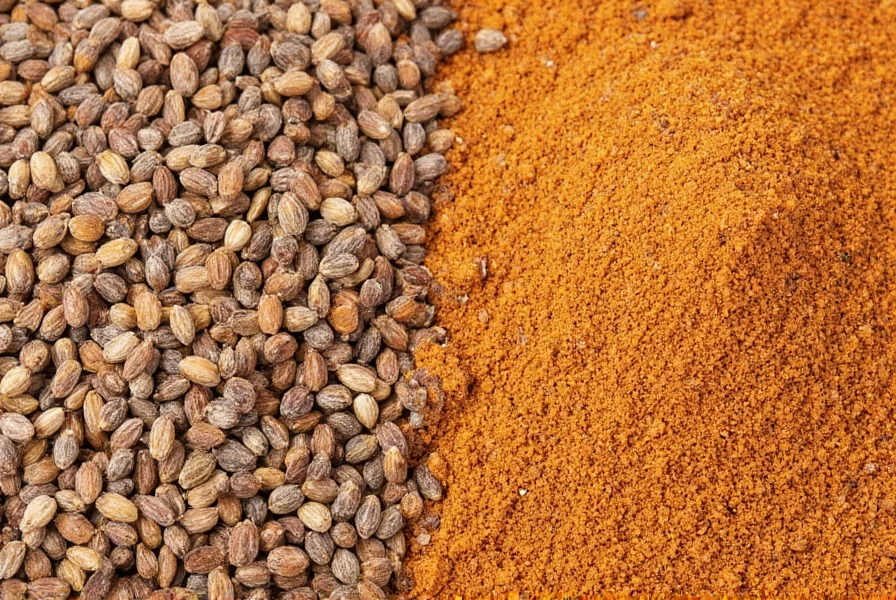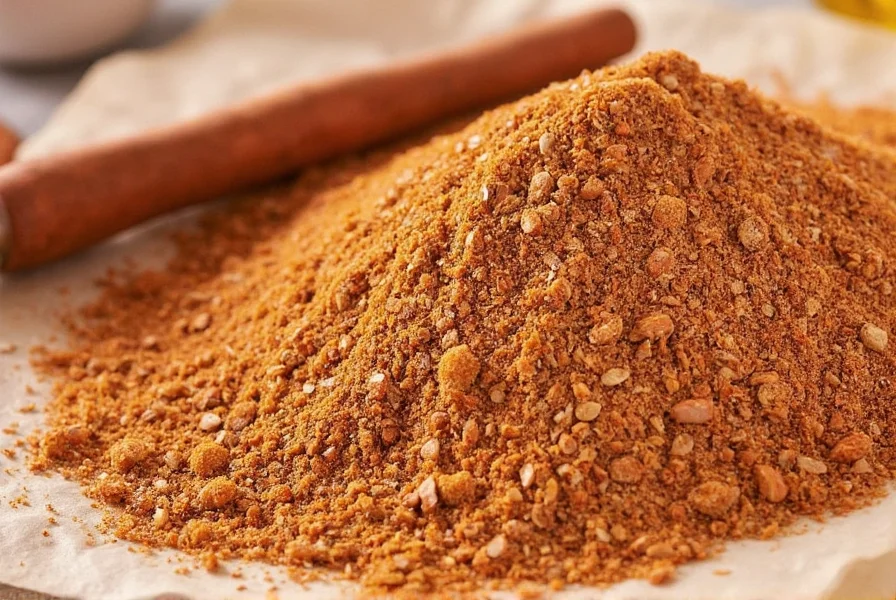Understanding the flavor profile of cumin is essential for home cooks and professional chefs alike. This ancient spice, derived from the Cuminum cyminum plant's dried seeds, has been used for thousands of years across multiple culinary traditions. When evaluating what does cumin spice taste like, it's important to recognize its multidimensional flavor characteristics that make it indispensable in many global cuisines.
The Complex Flavor Profile of Cumin
Cumin's taste isn't easily reduced to a single descriptor. When you first encounter cumin, you'll notice its warm, earthy foundation. This earthiness forms the base note that supports several other flavor dimensions:
- Earthy and warm - The dominant characteristic, reminiscent of soil and autumn
- Citrus undertones - A subtle lemony brightness that cuts through richness
- Nutty notes - Similar to roasted peanuts or sesame seeds
- Peppery finish - A mild heat that lingers on the palate
- Slightly bitter edge - Adds complexity when used in proper proportions
What does ground cumin taste like compared to whole seeds? Whole cumin seeds offer a more floral, delicate flavor with brighter citrus notes. When ground, cumin becomes more intense, with amplified earthiness and a slightly more pronounced bitterness. This is why many chefs prefer to toast and grind cumin seeds fresh for optimal flavor when exploring what does cumin spice taste like in different applications.
How Cooking Method Affects Cumin's Flavor
The way you prepare cumin dramatically impacts its taste profile. Understanding these transformations helps answer what does cumin spice taste like in various cooking scenarios:
| Preparation Method | Flavor Transformation | Best Culinary Applications |
|---|---|---|
| Raw (uncooked) | Bitter, harsh, overly pungent | Avoid using raw in most dishes |
| Dry-toasted | Nutty, warm, aromatic, mellowed bitterness | Rubbed on meats, added to rice dishes |
| Oil-toasted | Richer, deeper, integrates with other spices | Curries, stews, sauce bases |
| Ground and added late | Sharp, more pronounced bitterness | Finishing spice for certain Middle Eastern dishes |
When you toast cumin seeds in a dry pan, the Maillard reaction creates new flavor compounds, transforming the spice from harsh and bitter to warm and nutty. Adding cumin to hot oil early in cooking allows its essential oils to bloom and integrate with other ingredients, creating a flavor foundation for the entire dish.

What Does Cumin Taste Like Compared to Similar Spices?
Many people confuse cumin with other spices. Understanding these distinctions helps clarify what does cumin spice taste like in relation to common alternatives:
- Cumin vs. Caraway - While visually similar, caraway has a sweeter, anise-like flavor without cumin's earthiness
- Cumin vs. Fennel - Fennel is distinctly sweet and licorice-like, lacking cumin's warmth
- Cumin vs. Coriander - Coriander is citrusy and floral but lacks cumin's earthy depth
- Cumin vs. Smoked Paprika - Both offer smokiness, but paprika lacks cumin's citrus notes
The chemical compound thujone contributes significantly to cumin's distinctive flavor profile. This same compound appears in varying concentrations in other herbs like wormwood and sage, explaining some flavor similarities across different botanical families.
Regional Variations in Cumin Flavor Perception
What does cumin spice taste like can vary based on geographical origin. Different growing conditions affect the spice's chemical composition:
- Indian cumin - Often considered the gold standard, with balanced earthiness and citrus notes
- Middle Eastern cumin - Typically more intense and slightly hotter
- Mexican cumin - Often stronger and more pungent than other varieties
- Iranian cumin - Known for exceptional floral notes and milder heat
These regional differences explain why recipes might call for specific cumin varieties. When substituting, consider adjusting quantities based on the origin of your cumin to achieve the intended flavor profile.
Common Misconceptions About Cumin's Taste
Several myths persist about what does cumin spice taste like:
- Myth: Cumin is extremely hot like chili peppers
Reality: Cumin has mild warmth but isn't technically spicy; its heat registers around 250-700 SHU on the Scoville scale (compared to 2,500-8,000 for jalapeños) - Myth: Cumin always tastes bitter
Reality: Properly toasted cumin has minimal bitterness; bitterness comes from improper preparation or excessive quantities - Myth: Cumin tastes the same in all dishes
Reality: Cumin's flavor interacts differently with various ingredients, creating unique taste experiences in different culinary contexts
Practical Applications: Using Cumin Effectively
Understanding what does cumin spice taste like helps you use it more effectively. Consider these professional tips:
- Toast whole seeds before grinding for maximum flavor development
- Add early in cooking for integrated flavor or late for pronounced presence
- Balance with acid (lemon juice or vinegar) to counteract potential bitterness
- Pair with complementary spices like coriander, turmeric, and chili for balanced flavor profiles
- Store properly in airtight containers away from light to preserve flavor compounds
Cumin's flavor shines in specific pairings that enhance its distinctive characteristics. Beans, lentils, tomatoes, lamb, and roasted vegetables all benefit from cumin's earthy warmth. In Middle Eastern cuisine, cumin pairs beautifully with tahini and garlic. Mexican cooking often combines cumin with oregano and chili for complex flavor layers.
Scientific Perspective on Cumin's Flavor Chemistry
The distinctive taste of cumin comes from its complex chemical composition. Key compounds include:
- Cuminaldehyde - Provides the characteristic warm, spicy aroma (60-70% of essential oil)
- Terpenes - Contribute citrus notes and floral undertones
- Thymol - Adds medicinal, slightly bitter notes in small quantities
- p-Cymene - Contributes to the overall earthy profile
These compounds interact with your taste receptors to create the complete sensory experience of what does cumin spice taste like. The balance of these compounds varies based on growing conditions, harvest time, and processing methods, explaining flavor differences between cumin varieties.
Conclusion: Mastering Cumin's Flavor Profile
Understanding what does cumin spice taste like unlocks its potential in your cooking. This versatile spice offers a complex flavor profile that can transform simple ingredients into extraordinary dishes when used thoughtfully. By recognizing cumin's earthy foundation with citrus undertones, nutty notes, and peppery finish, you can harness its full potential in your culinary creations. Remember that preparation method significantly impacts cumin's flavor expression, so experiment with toasting techniques and timing to discover your preferred taste profile.
Frequently Asked Questions
Why does cumin taste bitter to some people?
Cumin contains natural compounds that some people perceive as bitter due to genetic variations in taste receptors. Improper preparation (using raw or burnt cumin) also creates bitterness. Toasting cumin seeds properly in oil or dry heat transforms bitter compounds into more pleasant nutty, warm flavors.
What does cumin taste like in curry compared to chili?
In curry, cumin blends with other spices like turmeric and coriander, creating a more integrated, complex flavor where its earthiness supports the overall profile. In chili, cumin stands more prominently, providing that characteristic warm, slightly smoky backbone that defines the dish. The liquid environment of chili allows cumin's flavors to distribute more evenly throughout the dish.
How can I reduce cumin's strong flavor if I've added too much?
To balance excessive cumin flavor, add acid (lemon juice or vinegar), sweetness (a small amount of sugar or honey), or dairy (yogurt or cream). Increasing other ingredients proportionally can also help dilute the cumin's prominence. Adding a raw potato to stews can absorb some of the strong flavors while cooking.
Does cumin taste different when used in vegetarian versus meat dishes?
Yes, cumin interacts differently with plant-based and animal proteins. In vegetarian dishes, cumin's earthiness complements beans and vegetables directly. With meats, particularly lamb and beef, cumin enhances the natural umami flavors, creating a more robust overall taste profile. The fat content in meat dishes also helps carry and mellow cumin's flavor compounds.
What does bad or old cumin taste like?
Stale cumin loses its vibrant citrus notes and becomes predominantly bitter with little warmth or complexity. It may taste dusty or cardboard-like. Fresh cumin should have a pronounced aroma even before opening the container. Properly stored cumin maintains peak flavor for 6-12 months, after which it gradually loses potency.











 浙公网安备
33010002000092号
浙公网安备
33010002000092号 浙B2-20120091-4
浙B2-20120091-4